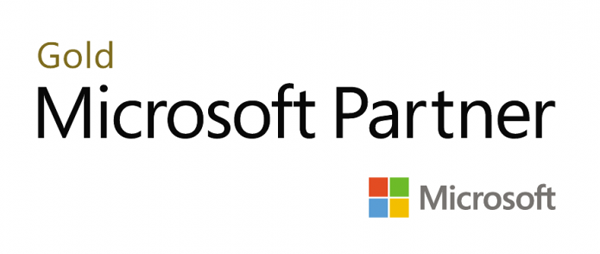Advanced Solutions of MS Sharepoint Server 2013, On Demand 20332
- Seminar
- E-Learning
- Zurzeit keine Termine
- 40 Unterrichtseinheiten
- Teilnahmebescheinigung
Seminarnummer: 29436
This course examines how to plan, configure, and manage a Microsoft SharePoint Server 2013 environment. Special areas of focus include implementing high availability, disaster recovery, service application architecture, productivity and collaboration platforms and features, business intelligence solutions, enterprise content management, web content management infrastructure, solutions, and apps.
Nutzen
In dieser MOC on Demand Version ist eine original MOC Unterlage in digitaler Form enthalten.
After completing this course, students will be able to:
After completing this course, students will be able to:
- Describe the core features of SharePoint 2013
- Plan and design a SharePoint 2013 environment to meet requirements for high availability and disaster recovery
- Plan and implement a service application architecture for a SharePoint 2013 deployment
- Configure and manage Business Connectivity Services features in a SharePoint 2013 deployment
- Plan and configure social computing features
- Plan and configure productivity and collaboration platforms and features
- Plan and configure Business Intelligence solutions
- Optimize the search experience for an enterprise environment
- Plan and configure enterprise content management in a SharePoint 2013 deployment
- Plan and configure a web content management infrastructure to meet business requirements
- Manage solutions in a SharePoint 2013 deployment
- Configure and manage apps in a SharePoint Server 2013 environment
- Develop and implement a governance plan for SharePoint Server 2013
- Perform an upgrade or migration to SharePoint Server 2013
Zielgruppe
The training addresses three audiences:
Existing SharePoint 2010 customers and partners who need to understand the major changes in SharePoint 2013. In addition there have been other improvements in tools and methodologies. Customer who are new to SharePoint. SharePoint market size is growing significantly and is expected to continue to grow, so there are many new customers with no previous experience. Customers running a previous version of SharePoint (SharePoint 2003 and SharePoint 2007) which did not upgrade to SharePoint 2010, so are not familiar with the architecture of SharePoint 2010 or SharePoint Server 2013.
Anforderungen
Before attending this course, students must have:
- Completed Course 20331: Core Solutions of Microsoft SharePoint Server 2013, successful completion of Exam 70-331: Core Solutions of Microsoft SharePoint 2013, or equivalent skills.
- least one years experience of mapping business requirements to logical and physical technical design.
- Working knowledge of network design, including network security.
- Experience managing software in a Windows 2008 R2 enterprise server or Windows Server 2012 environment.
- Deployed and managed applications natively, virtually, and in the cloud.
- Administered Internet Information Services (IIS).
- Configured Active Directory for use in authentication, authorization and as a user store.
- Managed an application remotely using Windows PowerShell 2.0.
- Connected applications to Microsoft SQL Server.
- Implemented Claims-based security.
Inhalte
Module 1: Understanding the SharePoint Server 2013 Architecture
This module introduces the architectural features that underpin Microsoft SharePoint Server 2013, both for on-premises and online deployments. This includes an examination of the features that are new in this version, as well as those that have been removed. This module reviews the basic structural elements of a farm deployment, and the different deployment options that are available in SharePoint 2013.
Lessons
Module 2: Designing Business Continuity Management Strategies In this regard SharePoint 2013 is no different, and farm administrators should create a disaster recovery plan that states how content and configurations are backed up, how data can be restored, and what backup schedules are required.
Lessons
Module 3: Planning and Implementing a Service Application Architecture This module reviews the service application architecture, how to map business requirements to design, and the options for enterprise scale, federated service application architectures.
Lessons
Module 4: Configuring and Managing Business Connectivity Services In this module, you will learn how to plan and configure various components of BCS.
Lessons
Module 5: Connecting People In this module, you will learn about the concepts and ways of connecting people in SharePoint 2013. You will examine user profiles and user profile synchronization, social interaction features and capabilities, and communities and community sites in SharePoint 2013.
Lessons
Module 6: Enabling Productivity and Collaboration This module examines how SharePoint 2013 extends the ability of users to work collaboratively and increase productivity through seamless integration with external software platforms, additional SharePoint collaboration features, and the provision of flexible tools, with which users can develop their own solutions to business problems.
Lessons
Module 7: Planning and Configuring Business intelligence In this module you will see how SharePoint 2013 can deliver BI solutions for your business.
Lessons
Module 8: P
Lessons
- Core Components of the SharePoint 2013 Architecture
- New Features in SharePoint Server 2013
- SharePoint Server 2013 and SharePoint Online Editions
Module 2: Designing Business Continuity Management Strategies In this regard SharePoint 2013 is no different, and farm administrators should create a disaster recovery plan that states how content and configurations are backed up, how data can be restored, and what backup schedules are required.
Lessons
- Designing Database Topologies for High Availability and Disaster Recovery
- Designing SharePoint Infrastructure for High Availability
- Planning for Disaster Recovery
Module 3: Planning and Implementing a Service Application Architecture This module reviews the service application architecture, how to map business requirements to design, and the options for enterprise scale, federated service application architectures.
Lessons
- Planning Service Applications
- Designing and Configuring a Service Application Topology
- Configuring Service Application Federation
Module 4: Configuring and Managing Business Connectivity Services In this module, you will learn how to plan and configure various components of BCS.
Lessons
- Planning and Configuring Business Connectivity Services
- Configuring the Secure Store Service
- Managing Business Data Connectivity Models
Module 5: Connecting People In this module, you will learn about the concepts and ways of connecting people in SharePoint 2013. You will examine user profiles and user profile synchronization, social interaction features and capabilities, and communities and community sites in SharePoint 2013.
Lessons
- Managing User Profiles
- Enabling Social Interaction
- Building Communities
Module 6: Enabling Productivity and Collaboration This module examines how SharePoint 2013 extends the ability of users to work collaboratively and increase productivity through seamless integration with external software platforms, additional SharePoint collaboration features, and the provision of flexible tools, with which users can develop their own solutions to business problems.
Lessons
- Aggregating Tasks
- Planning and Configuring Collaboration Features
- Planning and Configuring Composites
Module 7: Planning and Configuring Business intelligence In this module you will see how SharePoint 2013 can deliver BI solutions for your business.
Lessons
- Planning for Business Intelligence
- Planning, Deploying, and Managing Business Intelligence Services
- Planning and Configuring Advanced Analysis Tools
Module 8: P
Hinweise
MOC On Demand Trainings sind original Microsoft Trainings, in denen Sie zeit- und ortsungebunden lernen können.
Diese Trainings enthalten:
- Zugang zum offiziellen Microsoft Video on Demand Kurs für 90 Tage ab dem ersten Zugriff.
- Einen Lab-Online-Zugang für praktische Übungen, der ab Kauf 6 Monate gültig ist.
- Eine originale MOC Schulungsunterlage in digitaler Form, wie sie auch in den Live-Trainings eingesetzt wird.


